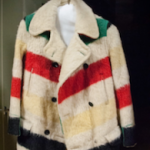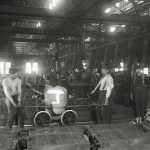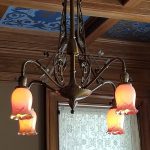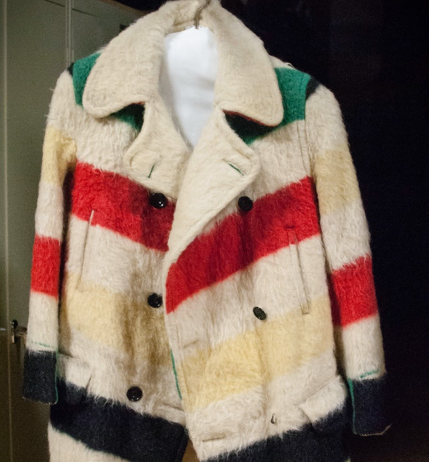 This wool coat was constructed from a ‘point blanket’ made by the Hudson’s Bay Company, likely during the early 1920s. A Wausau businessman wore it at one of the town’s early Winter Frolics, an annual winter sports festival that attracted tourists from as far as Chicago. The businessman belonged to a group of local business leaders who initiated and hosted the first Wausau Winter Frolic in 1927. The frolic was a town-wide event which made Wausau famous as a winter sports capitol.
This wool coat was constructed from a ‘point blanket’ made by the Hudson’s Bay Company, likely during the early 1920s. A Wausau businessman wore it at one of the town’s early Winter Frolics, an annual winter sports festival that attracted tourists from as far as Chicago. The businessman belonged to a group of local business leaders who initiated and hosted the first Wausau Winter Frolic in 1927. The frolic was a town-wide event which made Wausau famous as a winter sports capitol.
Point blanket coats like this one have a very long history in Wisconsin and the region around the Great Lakes. Warm and water-resistant, the wool used in coats like this guarded against the harsh winters in the Great Lakes. From the beginning of the fur trade in the sixteenth century, Europeans traded wool blankets for beaver pelts, but in 1780 the British Hudson’s Bay Company began selling wool blankets with a distinctive pattern of stripes. Although the Hudson’s Bay Company was based in the British colonial Canada, their point blankets were traded throughout the Great Lakes and farther west, following the fur trade. While the fur trade continued, the Hudson’s Bay Company sold their wool blankets to fur traders of European descent and to Native
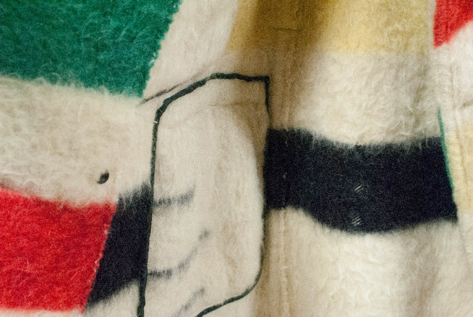
Americans. Often point blankets were used simply as blankets, but trappers and traders also be belted or sewed the blankets into coats similar to the one the businessman wore to the Wausau’s Winter Frolic in 1927.
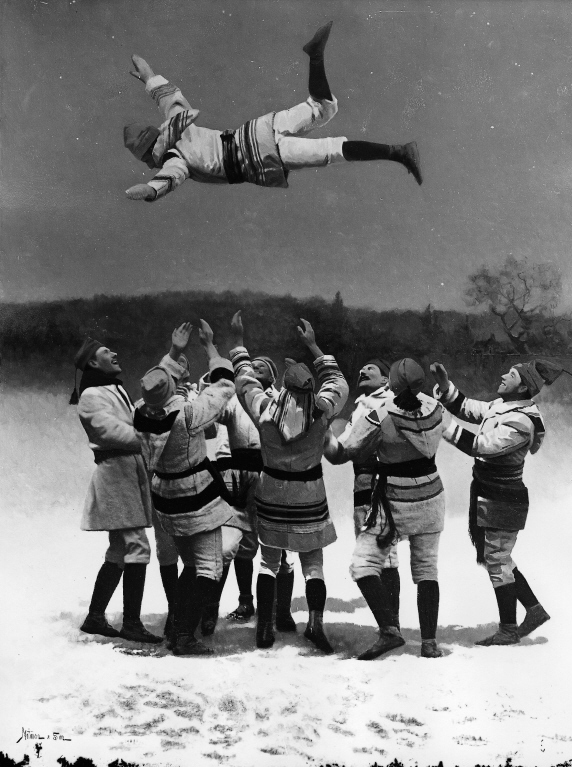
The blanket and the coat got their name from their “points.” These were a series of black stitches sewn into the cloth. Points indicated the size of the blanket without requiring traders to unfold the blanket. The points were always sewn on the topside corner of the blanket. For instance, 3.5 points is equivalent to today’s twin-sized blanket.
This coat was not made from a blanket used as part of the fur trade. In fact, it was not made from a blanket at all. Instead it was designed to look like those earlier coats trappers and traders made out of wool point blankets. This coat was manufactured by the Hudson’s Bay Company several decades after the fur trade ended.
Interestingly, though it was not made out of an original point blanket, there are still points stitched on the back of right pocket of the coat. Most mass-manufactured point blanket coats were constructed with the points visible on the outside of the coat, typically beneath the left arm. In manufactured blanket coats, as in point blankets during the previous century, the visible points were a mark of authenticity.
Written by Anna Wright, February 2018.
Object courtesy of the Marathon County Historical Society.
RELATED STORIES
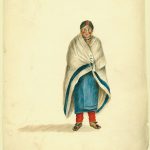
What is a Point Blanket Coat?
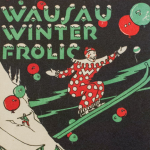
The Wausau Winter Frolic: Wausau’s History as a Sports Capital
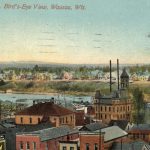
The Wausau Group: The Businessmen Who Revived Wausau’s Economy
